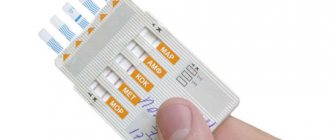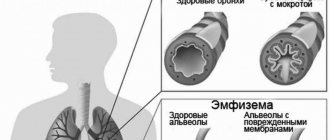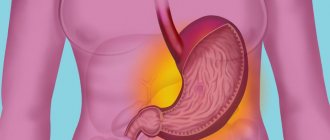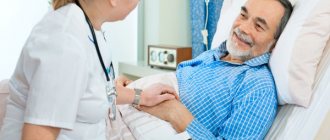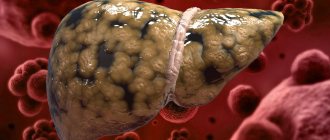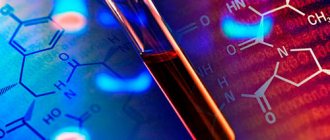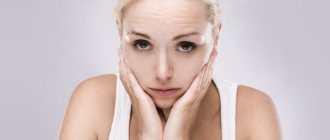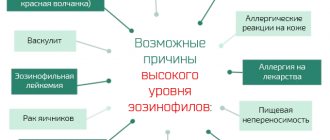Gastroduodenitis is an inflammatory process that simultaneously involves the walls of the stomach and duodenum in the pathology. Drugs for the treatment of gastroduodenitis are prescribed depending on the causes of the disease, which can be poor diet, infection with the bacterium Helicobacter pylori, as well as long-term addiction to bad habits.
- Eradication therapy
- Treatment of disease without bacteria
- Treatment regimen
The disease exists in several forms - acute and chronic. It follows from this that the timing of drug therapy will differ. In the first case - until the manifestation of the clinical picture is completely eliminated, in the second - only in the exacerbation stage, which is often seasonal.
In addition, such a disorder very often occurs with an increase in the level of hydrochloric acid, which is why drugs to normalize acidity should be involved in complex treatment.
Only the attending physician can prescribe a particular group of medications, depending on the goals of therapy:
- normalization of corticovisceral disorders - the use of adaptogens and sedatives is indicated;
- normalization of hydrochloric acid secretion. In case of low acidity, stimulants are used for a month, and in case of increased acidity, which occurs several times more often, the use of anticholinergics, histamine blockers, antacids and PPIs is indicated;
- elimination of motor-evacuation disorders is carried out with the help of prokinetics;
- restoring the balance between protective and aggressive factors is achieved using cytoprotectors and synthetic prostaglandins;
- Elimination of chronic gastroduodenitis, the cause of which was a pathological bacterium, is carried out with antibacterial drugs.
In addition, treatment will differ depending on the results of tests that are aimed at detecting the bacterium Helicobacter pylori.
The essence and mechanism of development of the disease
Children are prone to gastroduodenitis. According to statistics, about 50% of young schoolchildren encounter pathology. With age, the number of patients increases. In high school, about 75% of schoolchildren deal with gastroduodenitis. Further statistics reflect a decline in the incidence of the disease to 55-60%, but this is due to its chronicity or the development of complications, and not to the complete recovery of patients.
In most cases, gastroduodenitis develops immediately after acute gastritis. With this disease, organ dysfunction is observed - the secretion of hydrochloric acid and enzymes is disrupted, motor skills suffer, pathogenic microflora appears, and the functioning of the digestive glands changes. As a result, the regenerative ability of the mucous membranes decreases, damaging free radicals appear, which cause cell death and the development of the inflammatory process, mainly in the pylorus (lower part of the stomach).
Dysfunctions worsen, inflammation spreads to the sphincter tissue, and its tone decreases. The bolus of food enters the intestines at the wrong speed; there is not enough bile and other substances to fully alkalize it. The mucous membranes of the duodenum suffer from chemical and mechanical irritation (acid, large food particles). Inflammatory changes cover the duodenum.
Further, the mechanisms of food digestion and nutrient absorption are disrupted. The body suffers from a lack of vitamins and minerals. With the progression of pathological processes, atrophy or hypertrophy of the walls of the duodenum is observed, and the risk of malignant tumors increases. Further necrotic changes in tissues lead to the formation of erosions and then ulcers. They can be localized in the stomach or small intestine, or affect both organs at the same time.
Read more about what superficial gastroduodenitis is
Superficial gastroduodenitis is the least severe form of inflammation in the pyloric region of the stomach and duodenum. Only the superficial layer of the mucosa is drawn into this process, the main part of it is not affected. Because of this, the symptoms of the disease are often blurred. The frequency of diagnosis of this pathology increases until high school age, then begins to decrease, which is associated with the transition of gastroduodenitis to gastric ulcer or chronic gastritis.
Chronic superficial gastroduodenitis is considered a precursor to gastric or duodenal ulcers, therefore early diagnosis and initiation of treatment for this pathology in adolescence is considered the best prevention of peptic ulcers and gastric cancer in adults.
The very name of the pathology originates from two diagnoses (duodenitis and gastritis). This means inflammation affects the mucous membrane of both organs. The diagnosis is very common, and many diseases of the digestive system originate from it.
If the pathology is not treated, complications arise, the inflammatory process spreads to all layers of the mucosa, then affects the muscle tissue of the stomach. The patient is diagnosed with peptic ulcer, erosive and other forms of gastritis.
What causes gastroduodenitis?
Poisoning is considered the most common factor in the development of gastroduodenitis. Consumption of poor-quality water and stale food leads to contact of the mucous membranes of the gastrointestinal tract with bacteria and toxins, to which they react with inflammation. Pathology can be caused by bacteria or viruses. Among the pediatric population, the most common gastroduodenitis is rotavirus origin.
Scientists also associate the pathology with the most common microbe on earth - Helicobacter pylori. Its carriers are 70% of the population, but the microbe causes gastrointestinal pathologies much less frequently, which is associated with the natural protective functions of the organ mucosa and the state of the immune system. When exposed to provoking factors (stress, smoking, unhealthy diet), the infection is activated, changes the concentration of acid in the stomach contents and causes dysfunctional disorders.
Over time, inflammatory changes spread to the duodenum and become chronic if the epithelium of the small intestine acquires the characteristics of the gastric mucosa. In this case, the duodenum becomes the second “convenient place for life” for Helicobacter pylori.
The work of the upper gastrointestinal tract is closely related to the autonomic nervous system. Duodenitis can be a consequence of vegetative-vascular dystonia, stress, shock, and psycho-emotional stress.
Improper nutrition plays a certain role in the development of pathology. Eating fatty, fried, pickled foods disrupts the functioning of the stomach, and then the duodenum, where the most important digestive enzymes and intestinal hormones are produced. With their deficiency, the entire digestive tract suffers. The work of the initial section of the gastrointestinal tract is adversely affected by the abuse of spicy foods, oversaturated with spices, as well as by eating too hot or cold food. One of the provoking factors is bad habits - smoking, addiction to alcoholic beverages.
Causes of the disease
The main reason for the development of the disease is irregular nutrition or consumption of junk food. Severe superficial gastroduodenitis can also be caused by the microbe Helicobacter pylori, which is a powerful irritant for the intestinal mucosa. There are other reasons for the appearance of pathology:
- regular physical and mental overload, depression;
- smoking, alcohol abuse;
- poisoning with poisons and toxic substances;
- genetic predisposition;
- radiation exposure;
- frequent consumption of salty, spicy, pickled and smoked foods;
- long-term use of antibacterial drugs;
- increased secretion of hydrochloric acid in the stomach;
- starvation diets.
In some cases, gastroduodenitis develops against the background of diseases of the liver, urinary and biliary tract.
Gastroduodenitis varies
Doctors classify gastroduodenitis according to etiology, forms, and symptoms. The disease can be primary when damage to the digestive tract is caused by eating harmful foods, infections, or taking medications (NSAIDs, hormonal drugs). Secondary gastroduodenitis is spoken of if the pathology is caused by internal disorders (endogenous factors) - chronic diseases of the pancreas and liver, hormonal imbalance, and malfunctions of the immune system.
Depending on the duration of clinical manifestations, gastroduodenitis can be acute (characterized by severe short-term symptoms) or chronic (mild symptoms, exacerbations followed by remissions). The phases are classified according to the intensity of symptoms:
- exacerbations – pronounced general and local symptoms, the patient’s complaints are confirmed by instrumental examination;
- incomplete remission - symptoms are weak or absent, but examination reveals signs of inflammation of the stomach and duodenum;
- complete remission - there are no symptoms or complaints, signs of inflammation are not detected during the examination.
Depending on the intensity of inflammatory changes in the mucous membranes of the gastrointestinal tract, gastroduodenitis is classified as mild, moderate and severe. Inflammation is accompanied by changes in the epithelial tissue of the mucous membranes. According to their morphological characteristics, the pathology can be:
- superficial catarrhal – inflammation affects only the superficial layer of the membranes, accompanied by increased formation of secretions;
- erosive - there is pronounced swelling of the mucous membrane with places of increased capillary permeability, their network is clearly visible, inflammation is located in patches and forms erosions of different sizes that can develop into ulcers;
- hyperplastic - the mucous membranes of the stomach and duodenum thicken, hypertrophy, fibrous fibers and epithelial metaplasia may appear;
- atrophic - the mucous membranes become thinner, lose their functions, innervation and blood supply are disrupted, which also leads to the degeneration of epithelial cells.
Pathology is also classified according to the nature of changes in gastrointestinal tract functions. In children, increased acidity of gastric juice and chemical damage to the duodenum are often detected. Among adults, atrophic changes in the mucous membranes predominate, accompanied by a decrease in acidity and weakening of the peristalsis of the digestive organs.
Forms of superficial gastroduodenitis
When superficial gastroduodenitis (superficial gastroduodenopathy) develops against the background of other pathologies of the digestive tract, it is secondary (endogenous); when a disease occurs against a background of relative health, it is considered primary (exogenous).
According to the level of inflammation, the pathology is regarded as the mildest. If at the initial stage of the pathology the disease is not recognized and treatment is not started, the inflammation can go first into an erosive and then into an atrophic or hyperplastic phase. In addition, the disease can occur against a background of low, normal or high acidity.
There are also several phases that replace each other: exacerbation, remission - complete or incomplete.
Depending on the severity of symptoms, the following is determined:
- Acute gastroduodenitis, in which there is severe pain, nausea, often with vomiting.
- Chronic. With it, the pain is not so intense, but almost constant, the symptoms are moderate.
Depending on the development of the disease and the type of course, pathology is divided into the following types:
- focal. This is the earliest and mildest form of pathology. The clinical picture of the disease is mild, pain is moderate, nausea and vomiting practically do not occur. Possible heartburn. One or more foci of inflammation appear on the mucous membrane. With proper therapy, the pathology can be completely eliminated. The consequences of the disease if left untreated can be serious: ulcers, erosions, cancer;
- diffuse (widespread). This form affects almost the entire mucous membrane at once, the symptoms are pronounced, treatment is more difficult and longer. This form often appears in adults;
- cardia failure. In this case, there is a closure of the valve responsible for separating the stomach from the esophagus, which is connected to it. As a result, a burn to the esophagus may occur;
- duodenogastric reflux. With this pathology, food is thrown back into the stomach from the intestines.
Variety of clinical manifestations
Gastroduodenitis can manifest itself as general symptoms (associated with inflammatory changes), which indicate intoxication of the body or lack of nutrients:
- weakness;
- fast fatiguability;
- drowsiness;
- apathetic mood;
- muscle weakness;
- pale skin;
- dizziness;
- brittleness of hair and nails;
- increased body temperature (not always);
- weight loss;
- poor appetite.
The clinical picture of gastroduodenitis is characterized by severe pain and dyspeptic syndromes. Main characteristics of the pain syndrome:
- the pain is localized in the upper and central part of the abdomen;
- may radiate to the left or right of the abdominal cavity;
- occurs more often on an empty stomach;
- resumes 1.5-2 hours after eating;
- most intense in the first half of the day.
Dyspeptic syndrome includes heartburn, belching, sour or bitter tastes in the mouth. Digestive disorders are manifested by heaviness and nausea after eating, rapid saturation with food regardless of the portion size, rumbling and seething in the stomach, flatulence, the release of foul-smelling gases, and possible vomiting.
Features of manifestations depend on the location of the most intense inflammatory process. Based on these characteristics, various clinical forms of gastroduodenitis are distinguished.
Under the “mask” of a stomach ulcer
Inflammation is concentrated in the stomach and duodenal bulb. Possible ulceration of the gastric mucosa. Patients experience sharp, cutting or stabbing pain in the upper abdomen (in the epigastric region), most often on an empty stomach or 2.5-3 hours after the last meal.
Under the “mask” of gastritis
Manifested by sour or foul-smelling belching, gastroesophageal reflux, moderate pain before and after eating. Accompanied by atrophic changes in the stomach and duodenum, which is manifested by impaired absorption of nutrients. Patients develop signs of vitamin deficiency and a sharp decrease in body weight. Vomiting is possible 20-30 minutes after eating.
Under the “mask” of cholecystitis
It is characterized by duodenostasis - a violation of duodenal peristalsis and stagnation of the food bolus in this segment. Gastroduodenal reflux (reflux of the contents of the duodenum back into the stomach) and vomiting of foul-smelling masses mixed with bile is possible due to this. Patients suffer from constant abdominal pain, the intensity of which increases after eating. The pain radiates to the right side.
Under the “mask” of pancreatitis
This clinical form develops with inflammation of the duodenal papilla and is accompanied by impaired outflow of pancreatic juice and bile from the common duct. Therefore, signs of pancreatitis are characteristic. The patient experiences diffuse abdominal pain, especially after eating fatty or difficult-to-digest foods. Possible fever and vomiting, stagnation of bile with subsequent yellowness of the skin.
Symptoms
Symptoms of superficial gastroduodenitis include:
- aching or cramping pain in the epigastrium after eating;
- white coating on the tongue;
- increased salivation;
- nausea, vomiting;
- diarrhea or constipation;
- dizziness, headache, sleep disturbances;
- poor appetite.
Important: when the first symptoms of the disease appear, you must seek help. If treatment is not prescribed promptly, the inflammation can become chronic.
Periods of exacerbation and remission
The disease develops against the background of exposure to several provoking factors. For example, if a person previously suffered from gastritis, has bad habits, overate, and was subsequently exposed to stress, the disease will most likely manifest itself. An exacerbation develops suddenly, manifests itself with a sharp decrease in appetite and abdominal pain, bowel disorders (usually in favor of constipation). The severity of symptoms depends on the degree of the inflammatory process. If the provoking factors are not eliminated, the clinical picture quickly increases.
Pain during hunger, after waking up and some time after eating, nausea and asthenia persist for 1.5-2 months. After this time, the symptoms begin to subside. Regression of clinical manifestations rarely takes more than 10 days. Residual symptoms include moderate pain in the abdomen when pressing on its center and peri-umbilical area. Then remission develops. Exacerbations are likely during the off-season. In summer and winter, the number of exacerbations decreases sharply.
Symptoms of superficial gastroduodenitis
This pathology does not have pronounced symptoms, since the inflammatory processes in this pathology are minimal. But the clinical picture is different: constant headaches, weakness, insomnia, and irritability are possible.
From the digestive tract, aching pain is felt in the abdominal area (usually after eating or eating unhealthy food), radiating to the navel and right hypochondrium, bile belching, nausea, increased salivation, heartburn. The tongue is often covered with a white coating, there is bad breath and an unpleasant taste in the mouth. Alternating constipation and diarrhea are also considered characteristic.
The presence of an inflammatory process can lead to disruption of vitamin metabolism. In the early stages of the disease, symptoms of hypovitaminosis are often not observed, but in later stages, signs of a lack of vitamins A, B, and C may appear.
The chronic form of superficial gastroduodenitis has less pronounced symptoms during remission. During an exacerbation, the intensity of the symptoms is similar to the acute form with severe pain, vomiting, and lack of appetite.
Who to contact - diagnostics
If you have signs of inflammation in the gastrointestinal tract, you should contact a gastroenterologist. The doctor will conduct an examination, listen to the patient’s complaints and prescribe laboratory and instrumental examinations. The patient will have to undergo general and biochemical blood tests (to assess the condition of the body as a whole, determine the level of enzymes and vitamins in the blood, identify concomitant pathologies), a coprogram (to assess the quality of food digestion, the presence of blood in excrement), testing for Helicobacter pylori (blood is examined for antibodies, stool, or a breath test).
Instrumental examination includes esophagogastroduodenoscopy. This is an endoscopic examination, the most informative among the available hardware methods for diagnosing pathologies of the stomach and duodenum. During it, an endoscope (optical equipment equipped with a flashlight) is inserted into the patient through the mouth, and the condition of the mucous membranes of the esophagus, stomach, and duodenum is examined and analyzed.
To assess the degree of inflammation and morphological changes in the mucous membranes, biopsies are taken in different places of the stomach and duodenum. They can also take gastric contents and a food bolus from the duodenum to assess the qualitative and quantitative composition of digestive juices and enzyme activity. To determine acidity, intragastric pH-metry is performed.
To assess the level of pressure and the condition of the muscles of the stomach and duodenum, gastro- and duodenomanometry is prescribed. To assess peristaltic activity, barium salt radiography may be prescribed. To assess the condition of other internal organs and digestive glands, an additional examination using ultrasound is most often prescribed. The gastroenterologist comprehensively analyzes the results, conducts differential diagnostics and establishes the final diagnosis.
For acute symptoms of gastroduodenitis, severe asthenia and intense pain, hospitalization is indicated. For moderate signs of the disease, treatment is carried out on an outpatient basis. The condition of children is monitored especially carefully. If a small patient lives in an unfavorable psycho-emotional environment or poor conditions, he must be hospitalized.
Diagnosis of pathology
All necessary studies are prescribed by a gastroenterologist. Based on the results obtained, the form of the inflammatory process and the stage of development of the disease are determined. Diagnosis of superficial gastroduodenitis includes the following procedures:
- Ultrasound of the stomach. The examination allows you to adequately assess the condition of this organ. Often the inflammatory process ends with a peptic ulcer; diagnosis helps prevent such consequences.
- Lab tests. To identify chronic or acute superficial gastroduodenitis, the patient's stool is examined. The presence of blood and Helicobacter is checked.
- X-ray of the stomach. Used to identify the chronic form of the disease.
Another effective method in gastroenterology is endoscopy. It is used to study the condition of mucous membranes and determine the location of the source of inflammation.
A procedure to determine the acidity of the stomach is considered mandatory. Research in gastroenterology allows us to draw a clear picture of the course of the disease and select the optimal therapy.
General principles of therapy
Correct and comprehensive treatment of gastroduodenitis ensures rapid elimination of symptoms, improvement of the patient's condition and prevents chronicity of the disease. However, even if therapy is started in a timely manner, there is no guarantee of complete recovery. With repeated exposure to provoking factors, the problem may reappear.
If the disease occurs once, doctors advise patients to monitor the quality of nutrition and the functioning of the gastrointestinal tract throughout their lives due to the tendency for repeated exacerbations and the risk of adverse consequences. In addition, the pathology is characterized by a hereditary predisposition. Most often, gastroduodenitis affects blood relatives, members of the same family and their descendants. Therefore, you need to be careful about digestive function if one of the person’s parents had problems with them.
The main aspects of the treatment of gastroduodenitis are drug therapy (aimed at eliminating inflammation in the gastrointestinal tract, normalizing the functions of the digestive organs, preventing complications) and diet (relieving the digestive tract, providing suitable conditions for restoring the mucous membranes and their functions). Herbal medicine and physiotherapy are used as auxiliary methods.
Patients with chronic gastroduodenitis are recommended to take preventive courses of medications 1-2 times a year, mandatory annual treatment at a resort, and lifelong adherence to the rules of a healthy and balanced diet. It is advisable to visit sanatoriums near sources of healing mineral waters. Equally important is normalizing the work and rest regime, avoiding stress and physical strain, giving up bad habits and eliminating other provoking factors.
Useful information: Chronic cholecystitis: more than 10 symptoms, treatment (12 drugs) in adults, herbal medicine, dietary features during exacerbation and during remissions
Eradication therapy
The only indicator for the use of eradication therapy is the identification of the pathological influence of the pathogenic bacterium. Such tactics are aimed at reducing the number of this microorganism or its complete elimination.
This treatment approach includes medications to reduce acidity levels and antibiotics. There is a distinction between first-line therapy and second-line therapy, which is prescribed if the first is ineffective. Thus, eliminating the disease in this way will consist of:
- taking PPI drugs for one week, as well as two antibiotics - Amoxicillin and Clarithromycin;
- the use of a proton pump inhibitor, as during the first-line tactics, two antibiotics - Tetracycline and Metronidazole, as well as a drug containing the effective substance bismuth.
Eradication therapy regimens
After completion of eradication therapy for gastroduodenitis in adults, it is recommended to use antisecretory drugs for ten days, in doses prescribed by a gastroenterologist. This group of medications includes:
- Omeprazole;
- Esomeprazole;
- Rabeprazole;
- Ranitidine;
- Famotidine.
Taking the above medications is indicated regardless of the causes of the disease, which is why they can be used for various forms of the disease. The scheme for combining such groups of substances and their dosage is calculated only by a specialist, otherwise medications can only aggravate the course of the disease.
Drug treatment
Several medications are usually prescribed to adults. In childhood, more attention is paid to diet therapy, and medications are given a secondary role, used when clinical symptoms are severe. Treatment of gastroduodenitis includes symptomatic and etiotropic therapy.
Antacids
Prescribed for gastroesophageal reflux, heartburn, sour belching, laboratory proven increased acidity of the stomach, as well as for pain. The action is realized by enveloping the mucous membranes and neutralizing excess hydrochloric acid.
Almagel A or Neo, Phosphalugel, Maalox are prescribed, 10-15 ml 2-3 times a day, 1 hour after meals, and also at night, for 10-14 days in a row. In pediatric practice, Phosphalugel is used ½-1 packet 3 times a day.
Antisecretory drugs
Prescribed to reduce the production of hydrochloric acid and pepsin, reduce the concentration of gastric juice and reduce its irritating properties. Due to this, the mucous membranes are restored and unpleasant symptoms are reduced.
Prescribed drugs from the group of M-anticholinergics, most often Gastrocepin (1 tablet 2 times a day half an hour before meals, for 14-20 days), Ranitidine (150 mg 2 times a day), Omeprazole and derivatives (1 capsule 20 mg 2 times a day, on an empty stomach).
Peristalsis stimulants
Drugs from this group are necessary to normalize gastrointestinal motility, eliminate duodenostasis, as well as symptoms such as nausea, vomiting, and constipation.
Metoclopramide (in age dosage), Motilium (1 tablet 3 times a day), Ganaton (1 tablet 3 times a day) are prescribed. The course of use of peristalsis stimulants depends on the symptoms and rarely exceeds 14 days.
Cytoprotectors
Agents with a cytoprotective effect are needed to accelerate the regeneration of the mucous membranes of the stomach and duodenum. For this purpose, Methyluracil tablets are prescribed (1 tablet 3 times a day, 2-3 weeks), sea buckthorn oil (1 teaspoon 3 times a day before meals), as well as antipeptic drugs. The latter neutralize proteolytic enzymes, slow down the formation of erosions and ulcers. They envelop the mucous membranes of the stomach, creating a protective layer in places “exposed” to gastric juice. Due to this, pain is reduced and the intensity of the inflammatory process is reduced, and erosions are delayed. Similar drugs include De-nol, which is prescribed 1 tablet 4 times a day or 2 tablets twice a day, or Sucralfate.
Elimination of Helicobacter pylori
Antibiotics are prescribed to eliminate the infection. If the secretion of hydrochloric acid is reduced (under the influence of the drugs Omeprazole, Pantoprazole, Esomeprazole), the bacteria become defenseless against them. Antibiotic therapy is started simultaneously or a day later after the start of treatment with antisecretory drugs.
In most cases, suppressing the infection dramatically alleviates negative symptoms and speeds up recovery. In the treatment of gastroduodenitis associated with Helicobacter pylori, the main antibiotic is Amoxicillin (taken 1000 mg 2 times a day, 10-14 days). To reduce the risk of bacteria acquiring resistance to antibiotic therapy, a second drug is prescribed. It could be:
- Clarithromycin (Klamed, Klacid) 500 mg 2 times a day, 10-14 days;
- Josamycin (Vilprafen) 100 mg 2 times a day;
- Nifuratel 400 mg 2 times a day;
- Metronidazole (Trichopol) 500 mg 2 times a day;
- Furazolidone 100 mg 4 times a day;
- Rifaximin 400 mg 2 times a day.
Treatment of children is carried out according to a similar scheme. Antibiotics should be prescribed by a doctor, taking into account age, weight, and drug tolerance. Self-medication with drugs can lead to aggravation of the pathology and the development of complications.
Enzyme products
Enzyme-based drugs are used to reduce the load on the digestive tract in general and the digestive glands in particular. Prescribe Pancreatin, Pangrol, Festal, Panzinorm with every meal.
Treatment of gastroduodenitis complicated by ulcers - erosive gastroduodenitis
If the disease has become chronic, then “cytoprotectors” are prescribed - these are medications that prevent the development of any complications. Often, treatment of gastroduodenitis in adults with medications is complex. That is, several medications are required to eliminate symptoms.
- “Sucralfate” - based on aluminum hydroxide and a disaccharide, is an effective drug, as a result of which a “protective film” appears at the site of erosion. This film prevents the acid from attacking the ulcer.
- Preparations based on colloidal bismuth are highly effective in combating high acidity. For example, one of these drugs is De-nol.
- “Prokinetics” are taken if “gastroduodenitis” is accompanied by symptoms such as pain, spasm, and impaired motor skills. These are medications such as: “Motilium”, “Cerucal” - which have antiemetic properties.
Traditional methods of treatment
Traditional medicine can be used in the treatment of gastroduodenitis only after consultation with a doctor. The disease cannot be cured with herbs alone, since in most cases antibiotic therapy is a necessity. In addition, the use of phytotherapeutic preparations is not a reason to abandon the diet.
The most popular treatment methods:
- herbal tea - mix a spoonful of chamomile and St. John's wort, pour half a liter of boiling water, cover the container, leave under the lid for about 2 hours, after straining, take half a glass orally 4 times a day;
- aloe juice - old aloe leaves are ground in a meat grinder, the juice is squeezed through cheesecloth, mixed with the same amount of honey, taken orally 1 teaspoon 3 times a day, half an hour before or 2 hours after meals, washed down with water;
- flaxseed - pour a tablespoon of seeds into a thermos with two glasses of boiling water, leave until the morning, take half a glass 4 times a day, in between meals;
- celandine and yarrow - mix dried herbs in a ratio of 1:3, brew a teaspoon of the mixture with a glass of boiling water, filter after cooling, take a third of a glass 3 times a day;
- fennel, mint and linden - dry plants are mixed in equal quantities, a tablespoon of the mixture is brewed in half a liter of boiling water in the morning, and half a glass of infusion is drunk throughout the day.
During treatment with traditional methods, the patient must carefully monitor the body’s reaction. If the symptoms of the disease worsen or other undesirable effects occur (pain, belching, heartburn), treatment should be stopped.
ethnoscience
A comprehensive course of treatment for gastroduodenitis also includes traditional medicine. Before using traditional recipes, you should consult with your doctor to prevent the development of unwanted complications and side effects.
Propolis and natural honey are great for gastroduodenitis. This product is a valuable source of vitamins, minerals, amino acids, macro- and microelements. In addition to strengthening the immune system, it performs a number of useful functions, including healing the mucous membrane of the stomach and duodenum.
You can consume natural honey daily. The daily dose should not exceed 150 grams. It can be consumed pure or diluted with warm water. It is important to remember that some types of honey can irritate the stomach, so it must be introduced into the diet with extreme caution and in small portions. It is not recommended to dilute honey with cold water, as failure to maintain the temperature may cause irritation of the mucous membrane. Warm water with honey reduces acidity and ensures rapid absorption. The duration of therapy with this beekeeping product is at least 2 months.
Read more about the treatment of gastroduodenitis with folk remedies. Medicinal herbs are very popular and are widely used in the treatment of gastroduodenitis. Mint, viburnum, aloe, yarrow, calamus root, centaury, nettle, St. John's wort and chamomile help a lot.
For gastroduodenitis, you can use mint infusion. To prepare it, brew ½ cup of mint raw material in a thermos using 1 liter of boiling water. Infuse the mixture overnight. Take ½ glass in the morning on an empty stomach and before each meal.
Gastroduodenitis requires competent therapeutic therapy based on folk remedies, diet and medications. Self-medication is prohibited.
Prognosis and prevention
The prognosis for patients with gastroduodenitis depends on the characteristics and origin of the pathology. In the secondary form, prognosis is improved only by proper treatment of concomitant diseases. In the secondary form, the prognosis is favorable. The patient can quickly stabilize the condition with proper treatment and diet.
To prevent troubles in the future, you will have to observe some restrictions in diet and lifestyle. Chronic gastroduodenitis with frequent and prolonged exacerbations has a poor prognosis. Constant inflammation of the walls of the stomach and duodenum can lead to the appearance of ulcers or malignant tumors.
Prevention of the disease consists of timely treatment of any infectious and inflammatory pathologies of the gastrointestinal tract, adherence to the principles of rational nutrition and abandonment of bad habits. If you have symptoms of gastrointestinal digestive disorders, it is important to consult a doctor as soon as possible and undergo a full examination. Only in this case can you collect a complete set of information about the disease and correctly prescribe treatment.
Symptoms of the disease in children
The course of the pathology can be both acute and chronic. Superficial gastroduodenitis in children manifests itself with the following symptoms:
- rumbling in the stomach;
- unpleasant taste in the mouth;
- short-term pain that occurs periodically in the stomach or duodenum;
- feeling of fullness in the stomach;
- nausea;
- frequent diarrhea or constipation;
- causeless loss of body weight;
- lack of appetite.
If the above symptoms are detected in a child, it is necessary to visit a doctor for examination and timely diagnosis. Self-medication can result in the disease becoming chronic or lead to serious consequences. Therapy involves bed rest, strict adherence to a diet, and medication.
FAQ
Question: Is it possible to cure gastroduodenitis at home, without swallowing a probe and tests?
Answer: Endoscopic examination is the main and most informative method for diagnosing pathology. Thanks to it, you can find out the form of the disease, the features of its development, and how pronounced the pathological processes are. During the first episodes of gastroduodenitis, you can suppress symptoms at home by following a diet. However, an increase in the clinical picture, deterioration of the patient’s condition and severe abdominal pain for more than 3 days are reasons to undergo a full examination.
Question: How to treat infectious gastroduodenitis, for example, after poisoning with a low-quality product?
Answer: Therapy must be prescribed by a doctor. However, general recommendations for treatment boil down to following a gentle diet, drinking enough liquid, and taking sorbents in the first days of the disease. Antibiotics and antimicrobials are prescribed as drug therapy (depending on the nature of the pathogen). This may be Furazolidone or Nifuroxazide. To relieve pain, antispasmodics (Drotaverine, Buscopan, Mebeverine) are prescribed.
Question: How to distinguish the disease from gastritis?
Answer: Against the background of gastritis and gastroduodenitis, all functions of the gastrointestinal tract suffer. Both pathologies are manifested by abdominal pain, disturbances in appetite and bowel movements. Inflammation of the duodenum is detected already during an examination by a doctor - during palpation of the abdominal cavity. When pressing on the umbilical area, the patient experiences moderate pain. A distinctive feature is also the time of occurrence of abdominal pain syndrome. With gastritis, hunger pains predominate; against the background of gastroduodenitis, discomfort occurs 1.5-2 hours after eating, when the food bolus reaches the small intestine.
Symptoms and causes of pathology
To begin treatment for gastroduodenitis, you need to consult a specialist. Based on the cause of gastroduodenitis, the clinical picture and the individual characteristics of the body, the attending physician will be able to draw up a treatment plan.
The reasons for the development of gastroduodenitis include stressful situations, improper and irregular nutrition, hereditary and endocrine factors, infections, and abuse of fatty and fried foods. With gastroduodenitis, the following symptoms appear:
- coating on the tongue;
- painful sensations in the stomach, as well as throughout the abdomen;
- dizziness, nausea and heartburn;
- fatigue, weakness;
- constipation and diarrhea;
- lack of appetite.
If these symptoms occur, you should definitely consult a doctor. Treatment should not be delayed, as untimely therapy can cause complications.
Gastroduodenitis can lead to the following complications: anemia, pancreatitis, immunodeficiency, polyposis, stomach and intestinal cancer, duodenal and gastric ulcers, exhaustion, extensive bleeding.
Folk remedies have proven themselves to be excellent in the treatment of gastroduodenitis. Before using any prescription, you should consult your doctor.
Effective treatment for adults
The basic rule for successful treatment of superficial gastroduodenitis is less chemical drugs, more natural ones.
- To restore intestinal microflora, increase immunity, and improve overall well-being, probiotics are prescribed. This group of drugs includes Bifidumbacterin, Laktovit, Laktiale, Turbiotic, Hilak Forte. Should be taken for at least 14 days. In case of severe intestinal dysbiosis, it is recommended to extend treatment for 2 months or more.
- Vitamins improve the condition of the digestive system, nervous system, and immune system. Special vitamin complexes with useful minerals are prescribed. The advisability of taking vitamins lies in the fact that the inflamed mucous membrane of the digestive tract cannot ensure normal absorption of beneficial components from food. Outside help is required.
- Superficial gastroduodenitis is accompanied by intoxication of the body of varying severity. The main signs are weakness, headache, nausea, and a slight increase in temperature. Sorbents remove toxins. Smecta, Activated carbon, Enterosgel, Enterol are prescribed. The duration of therapy is about 14 days. The dosage is determined according to the instructions. These same drugs help normalize stool.
- To eliminate abdominal spasms and painful sensations, no-spa, Drotaverine, Papaverine, Meverine are prescribed. Colikid, Espumisan, Activated carbon removes bloating. Tincture of valerian and motherwort eliminates rumbling.
- For severe heartburn and increased acidity, Almagel, Maalox, Rennie are prescribed. The products coat the walls of the esophagus and stomach and prevent irritation. Reduce acidity, eliminate heartburn, relieve pain, eliminate nausea.
- If severe attacks of nausea bother you, take Domrid, and Omez is prescribed to normalize acidity.
- Effective treatment of superficial gastroduodenitis is not complete without sedatives. They have a beneficial effect on the nervous system, relieve spasms, relieve pain, improve the absorption of active components of medications, and soothe irritated gastrointestinal mucosa.
To normalize well-being and improve the functioning of the digestive tract, it is recommended to drink medicinal tea based on medicinal plants. Melissa, mint, thyme, and chamomile have anti-inflammatory, soothing, analgesic, and enveloping properties. Calamus root and rose hips activate the activity of the gallbladder and promote the outflow of bile. The medicinal potion is poured with water and left for 15 minutes.
Currently reading: Acute gastroduodenitis
Approximate menu for those suffering from gastroduodenitis
At first glance, it seems that the diet is tasteless and monotonous, but this is not at all the case. Below is an approximate menu for one day, which shows that the nutrition of a patient with gastroduodenitis can be appetizing and varied.
For breakfast you can eat a steamed omelet, a dried piece of bread and tea with a little milk.
Since you need to eat in small portions and often, after two or three hours treat yourself to a small portion of semolina porridge.
For lunch you can prepare vegetable soup and fish cake. We wash everything down with jelly.
After another two to three hours, you can eat the apple (grated or baked). If desired, you can eat dry cookies, a couple of spoons of cottage cheese, or drink juice from your favorite fruit.
We have dinner with rice porridge boiled in milk. You can drink it with rosehip decoction.
Before going to bed, eat low-fat fermented baked milk. One glass is enough.
If your condition improves, the list of allowed foods can be expanded slightly. Below is a menu for one day for a patient whose disease is in remission.
For breakfast, you can eat porridge with milk or cottage cheese, to which it is recommended to add your favorite berries.
After two or three hours, treat yourself to two baked apples and compote.
For lunch we will prepare pureed vegetable soup. The second dish is boiled meat (lean, of course) with grated rice.
After a couple of hours, you can drink berry mousse or freshly squeezed juice.
For dinner we prepare grated vegetables (you can add potatoes). You can also boil the fish (or steam it) or eat a few spoons of cottage cheese.
Before going to bed, you can drink a glass of low-fat kefir or yogurt. In general, fermented milk products at night are the key to the health of the gastrointestinal tract.
You can receive more detailed information regarding nutrition rules, meal schedules and other diet-related issues during a consultation with your doctor. Only a specialist will be able to competently answer all your questions and choose an individual diet for you.
These rules also apply to small patients suffering from gastroduodenitis. Nutrition of a child is a very important issue, especially when it comes to stomach pathologies. Therefore, only the attending physician should prescribe a diet for children. If the baby is breastfed, then his mother should follow a therapeutic diet so that foods that are difficult to digest do not enter the baby’s body through breast milk.
What is chronic gastroduodenitis
This disease is diagnosed in both adults and children; its peculiarity lies in the combination of damage to the beginning of the small intestine and the gastric mucosa, which causes a severe course and treatment of the pathology. The clinical picture of chronic gastroduodenitis is practically no different from the symptoms of gastritis, which complicates the diagnosis of the disease. However, a distinctive feature of gastroduodenitis is damage to the mucous membrane of the duodenum, which leads to disruption of the hepatobiliary region and pancreas.
Do they take into the army with chronic gastroduodenitis? In each individual case, the doctor decides the suitability of the young man for military service; for this purpose, diagnostic measures are carried out, and the patient’s medical history is collected. If the disease has rare periods of exacerbation, the young man is considered partially fit for service. If chronic gastroduodenitis often progresses and the patient requires systematic hospitalization, he may be completely exempt from military service.
ICD-10 code
According to the international classification of diseases, chronic gastroduodenitis is assigned code K29.9. A characteristic feature of the disease is that it is more severe than simple duodenitis or gastritis. The peculiarity of the chronic form of the pathology is the dysfunction of the pancreas and various autonomic disorders. Treatment of gastroduodenitis, along with other medications, involves mandatory intake of B vitamins.
Prevention
Prevention of exacerbation or appearance of superficial gastroduodenitis consists of the following rules:
- Often the cause of the development of pathology is stress and depression. To prevent the emergence of these negative factors, it is necessary to avoid quarrels, scandals, and unpleasant emotional situations. You can relax with music and walking.
- Good health is impossible without a strong immune system. Particular attention should be paid to the immunity of people who have a hereditary predisposition to gastroduodenitis. You can strengthen your immune system through physical activity, yoga, medications and vitamins.
- A sleep and rest routine will help you avoid illness. Prolonged and frequent physical activity, irregular work schedule - all this negatively affects the internal strength of the body, leads to chronic fatigue and poor digestion.
- It is necessary to exclude all external negative factors, i.e. you need to give up bad habits. Alcoholic drinks and nicotine irritate the gastric mucosa, trigger an inflammatory process, and disrupt digestion.
Advice! Diet is extremely important. It is necessary to limit the consumption of junk food and alcoholic drinks as much as possible.
Thus, superficial gastroduodenitis is a harmless disease that responds well to treatment. But if the pathological process is started, then longer therapy using several techniques will be required.
A few words about disease prevention
We looked at the symptoms and treatment of gastroduodenitis. Nutrition necessary for recovery and maintenance of therapeutic effects was also considered.
However, what about prevention? In order to prevent the development of the disease, you must follow some simple rules.
First of all - nutrition. It must be correct and balanced. Avoid quick snacks, unhealthy foods in the form of fast foods, processed foods, too hot dishes, smoked foods, fatty foods, and so on. Enrich your diet with protein foods, dairy products and vitamins. Avoid excessive night eating, strict diets and overeating.
What can we say about bad habits? Smoking, alcoholic drinks and other negative factors negatively affect not only the gastrointestinal tract, but also the entire human body.
And of course, take care of your nerves. As we learned above, an important factor provoking the development of gastroduodenitis is stress and similar conditions. Try to be less nervous, take failures and life’s adversities calmly. If you find yourself with nervous conditions, consult a doctor who will prescribe the necessary treatment, so that the nervous system will no longer negatively affect the organs of the gastrointestinal tract and other important systems of the body.
Treatment of exacerbation of gastroduodenitis
At the first signs of exacerbation, you should contact a gastroenterologist to clarify the diagnosis. Treatment of chronic gastroduodenitis is a whole range of measures, including the following: drug therapy, dietary nutrition, proper regimen, folk recipes, bed rest, physiotherapy, psychotherapy.
Treatment of gastroduodenitis should be aimed at achieving the following goals:
- Stopping the inflammatory reaction.
- Restoration of secretory functions.
- Normalization of the flow and release of bile secretions.
- Elimination of imbalances in the stomach, duodenum and nervous system.
Medicines
The doctor selects medications depending on the type of gastroduodenitis and the provoking factors of its development. For example, if a Helicobacter pylori infection has been identified, then you cannot do without antibacterial agents.
Often a combination of two or three antibiotics is used. For increased acidity, antacids and antihistamines, as well as proton pump inhibitors, are used. To combat atrophic changes, bismuth preparations are prescribed.
If Helicobacter pylori is detected, gastroduodenitis should be treated with antibiotics
Diet
Proper nutrition is essential in the treatment of inflammation of the stomach and duodenum. First, let's talk about foods that should be excluded: fatty, spicy, smoked, pickled, etc., alcoholic drinks, rich broths, strong tea and coffee.
Important! Diet is a prerequisite for exacerbation of chronic gastroduodenitis.
Vegetables and fruits must be heat-treated, with the exception of tomatoes. Products such as radishes, white cabbage, spinach, cucumbers, and onions irritate the mucous membrane, so it is better to avoid them during a relapse. Products can be baked, steamed, boiled and stewed.
Each body is individual, so if some product personally causes an aggravation for you, then you should avoid it. In the first days of an exacerbation, the diet should consist of decoctions and compotes without sugar: rose hips, cocoa, herbal tea.
After a few days, it is permissible to introduce vegetable soups and low-fat broths with a small addition of cereals into the diet. It could be rice, oatmeal or semolina. As for meat dishes, it is better to give preference to low-fat varieties: rabbit, chicken, beef. Steamed fish is also allowed.
It is better to discuss the menu with your doctor and clarify what you can and cannot do
Folk recipes
In addition to medications and dietary nutrition, traditional medicine advice will help speed up the healing process. To prepare non-traditional medicines, the following plants are taken as a basis: yarrow, chamomile, St. John's wort, hops, valerian, dill.
The decoction regimen is drawn up by the doctor and is individual for each patient. Traditional recipes are used for both medicinal and preventive purposes. Let's consider the most effective methods:
- Juices. You can use potato and cabbage juice. You should use exclusively freshly squeezed juices, which are consumed half a glass before meals. The course of treatment is ten days, then you need to take a ten-day break. It is better to dilute juices in equal proportions with water. They relieve symptoms of the disease and normalize digestive processes.
- Mint infusion. Pour half a glass of dry mint with a liter of boiling water and let it brew in a thermos. In the morning, drink half a glass on an empty stomach, and then take the same amount before lunch and dinner.
- Flax seeds. The product should be turned into flour. A tablespoon of flax is poured into two glasses of water and put on fire. After the water boils, the product is simmered over low heat for another twenty minutes. Then it should be allowed to brew for a full hour. The infusion should be taken in the morning on an empty stomach for three months. After the end of the month, you should not forget to take a ten-day break.
- Infusion of celandine. The grass is poured with alcohol and left to infuse for two weeks. Start taking the product five drops at a time, increasing the dosage by one drop per day. The maximum dosage is fifty drops, then the dosage should be reduced in the reverse order.
Exacerbation of chronic gastroduodenitis may be associated with dietary errors, Helicobacter pylori infection, or even stressful situations. The pathological process causes enormous discomfort, causing pain and dyspeptic disorders in the form of heartburn, belching, and bloating.
Gastroduodenitis has various forms, some of which experts call a pre-ulcerative or even precancerous condition. To avoid the development of dangerous complications, contact a specialist in a timely manner. The disease can only be eliminated through comprehensive measures.
Treatment of gastroduodenitis is not only drug therapy. In order to cope with inflammation, it is necessary to change your lifestyle and adjust your diet. Follow all the doctor's recommendations, give up bad habits, don't let negative thoughts take over your mind, and be healthy!
Reasons for the development of pathology
Continuation of the inflammatory process in the upper parts of the duodenum is characteristic of superficial gastroduodenitis, provoked by Helicobacter pylori or other pathogenic formations. The reason for the spread of infection is the lack of a protective factor - a “locking mechanism” between the stomach and duodenum. This form is classified as focal gastroduodenitis.
Attention! Attempts to ignore or treat the disease on your own can lead to a severe form of inflammation of the stomach: diffuse gastroduodenitis, and then duodenal ulcer.
Reasons for the development of superficial gastroduodenitis:
- violation of the diet in the presence of chronic gastritis;
- activation of pathogenic microorganisms due to stress and depression, excessive use of antibiotics, unbalanced diet, etc.;
- genetic predisposition.
The cause of the development of superficial gastroduodenitis is a violation of the diet.
Also, the onset of the inflammatory process in the stomach is provoked by excessive consumption of alcohol and nicotine.
Important! To spare the gastric mucosa from prolonged contact with gastric juice, eat food every three hours in small portions. The approximate volume of one serving is a large tea cup.
Classification of the disease
Based on the depth and type of lesion, gastroduodenitis is divided into the following types:
- Surface. It is considered the mildest form of the disease. It is characterized by inflammation of the mucous membrane of the duodenum and stomach, the organs function relatively normally, no erosions are observed.
- Hypertrophic. It manifests itself in a strong inflammatory process, which provokes thickening of the mucous membrane of organs, as well as the formation of folds and growths on them.
- Erosive. It is characterized by the appearance of numerous small wounds (erosions) localized on the mucosal membranes of organs such as the duodenum and stomach. As a result, cells characteristic of the intestine may appear in the stomach, which indicates an abnormal pathological process. When the first symptoms of erosive gastroduodenitis appear, treatment should begin as early as possible. This form of the disease manifests itself in severe pain, especially in the first part of the day, complete loss of appetite and blood in the vomit.
- Mixed form. The mucous membrane of the organs thickens, growths and folds appear on it, and areas of atrophy appear.
Gastroduodenitis is also classified depending on what acidity predominates in the stomach: increased, normal or decreased.
What can we say about the duration of the disease? Based on this factor, two forms of gastroduodenitis are distinguished - chronic and acute.
Diet and nutrition rules
Proper nutrition is of utmost importance for gastroduodenitis. During remission, it is necessary to exclude the following foods from the diet:
- alcohol;
- strong broths;
- fatty meat, poultry and fish;
- spicy dishes (mustard, pepper, horseradish, garlic, etc.);
- strong coffee and tea;
- marinades, smoked meats, etc.
The basis of nutrition should be soups (with a second broth), lean meat, poultry, lean fish, cereals, vegetables and fruits. Products can be boiled, stewed, steamed or baked. In the acute stage, nutrition should be mechanically, chemically and thermally gentle. You can prepare liquid milk porridges, pureed soups with vegetable or weak meat broth, jelly, and compote. All dishes should be eaten warm.
What can we say about diagnostics?
So, we have looked at the symptoms of gastroduodenitis. Treatment of the disease with drugs and folk remedies will be discussed further. Now let's discuss how to diagnose the disease.
To determine the disease and its cause, a comprehensive examination is carried out, which primarily includes a blood test and ultrasound examination. The first type of diagnosis can show the presence of an inflammatory process in the human body (as a result of the analysis, pay attention to the indicators of leukocytes and ESR). Thanks to ultrasound, it will be possible to detect ulcerative areas or any other pathologies of the stomach. The study will need to be carried out after drinking a large amount of water. Yet these types of surveys are not considered informative.
The attending physician will definitely refer the patient for endoscopy. It is thanks to this procedure that the specialist will be able to assess the true condition of the patient, what the gastric mucosa looks like, whether redness, swelling or folds are found on it. Another important study - histology - can indicate the presence of atrophic processes in an organ.
Very often, when diagnosing gastroduodenitis, the attending physician may prescribe a pH analysis. This study is necessary in order to determine the form of the disease; gastroduodenitis occurs against the background of increased or decreased acidity. Depending on the test result, appropriate treatment will be prescribed.
Causes
Superficial gastroduodenitis appears as a result of prolonged or periodic exposure to negative factors in combination with a disorder of the nervous system.
- Fatty, spicy, salty, fried foods cause irritation of the mucous membrane.
- Excessive consumption of sweets, coffee, and carbonated drinks contributes to inflammation of the mucous membrane.
- Improper diet - dry food, overeating before bed, fasting, strict diet - causes disruption of the digestive tract.
- Alcohol irritates the esophageal mucosa and disrupts the intestinal microflora.
- Superficial gastroduodenitis occurs due to the use of narcotic substances, medications, and smoking.
- Provocateurs of inflammation are stress, shock, depression, exhaustion of the nervous system, and inadequate sleep.
- The disease appears with decreased immunity, frequent colds, hormonal imbalance, and low physical activity.
- Genetic predisposition, increased acidity, frequent inflammatory diseases in the nasopharynx, intestinal dysbiosis.
The main cause of superficial gastroduodenitis in children and adults remains poor nutrition and impaired food intake.
Currently reading: Catarrhal gastroduodenitis
Diagnostics
Carrying out duodenal intubation.
To create stages of treatment tactics, it is necessary to make a timely and correct diagnosis of superficial gastroduodenitis. For this purpose the following are used:
- esophagogastroduodenoscopy with biopsy;
- duodenal intubation;
- X-ray with contrast;
- Ultrasound;
- histological analyses.
To determine fluctuations in acidity levels, the pH-metric method is used.
List of foods for diet
The main method of superficial gastroduodenitis is proper nutrition. The right foods eliminate irritation, improve the functioning of the digestive tract, and relieve inflammation. Dietary nutrition involves normalizing the diet and correct selection of products. There are heat treatment requirements.
- Dishes should be steamed, boiled, baked, or stewed. Fried foods, seasonings, mayonnaise, hot sauces, and ketchup are completely excluded. It is allowed to season with butter, vegetable oil, and sour cream.
- During an exacerbation, vegetables should only be eaten stewed. After the unpleasant symptoms disappear, you should eat more raw vegetables. Legumes and cabbage are not recommended during an exacerbation. Beets, carrots, sauerkraut, potatoes, and onions are allowed. It is recommended to add greens to dishes - onions, parsley, dill, lettuce, celery.
- Food should be eaten warm. Food that is too cold or too hot irritates the mucous membrane.
- It is necessary to normalize the diet. During an exacerbation, you need to eat in small portions 5-6 times a day. Chew thoroughly. In the future, you should provide a full breakfast, lunch, dinner, and avoid overeating before bed.
- The main diet is soup, porridge, mashed potatoes, vegetable stew, and fermented milk products. Low-fat meats are allowed - chicken, turkey, veal, rabbit, pork without lard. Steamed cutlets, dumplings, dumplings, cheesecakes, cottage cheese casseroles, stewed and boiled fish are allowed.
Currently reading: Chronic gastroduodenitis - causes, symptoms, proper treatment
Strict adherence to the diet will help get rid of unpleasant symptoms in a few days, and proper nutrition will help avoid relapses in the future.
Prohibited products:
- ketchup;
- mustard;
- mayonnaise;
- spices;
- peas;
- beans;
- cabbage;
- canned food;
- citrus;
- grape;
- plums, cherries;
- coffee;
- carbonated drinks;
- products containing dyes and flavor enhancers;
- fried fish, meat;
- sweets with cream.
Authorized products:
- kefir;
- yogurt;
- cottage cheese;
- cheese;
- sea fish;
- chicken;
- lean pork;
- rice;
- buckwheat;
- oatmeal;
- crackers, bagels, croutons;
- bread;
- mineral still water;
- medicinal herbal tea;
- dried fruits compote.
Dietary nutrition is supplemented with special pharmaceutical drugs if the symptoms are severe and do not disappear after 3 days of the diet.
